Abstract
The effects of Trypanosoma brucei gambiense infections upon immune responses were examined in an outbred laboratory colony of field voles. Microtus montanus. Antibody levels to challenge with heterologous erythrocytes and bovine serum albumin were significantly depressed in infected animals. Trypanosome infections impaired both primary and secondary humoral responses, although previously established specific antibody levels were not affected by infection. Specific antibody-producing capabilities of previously infected, trypanoicidal drug-treated voles were found to be comparable to uninfected controls, within 3 days following chemotherapy. Cell-mediated hypersensitivity responses to oxazolone were also significantly depressed by trypanosome infection; responses to the initial sensitization of oxazolone and to secondary challenge treatments were depressed compared to uninfected controls. Possible mechanisms of trypanosome-induced immunodepression are discussed.
Full text
PDF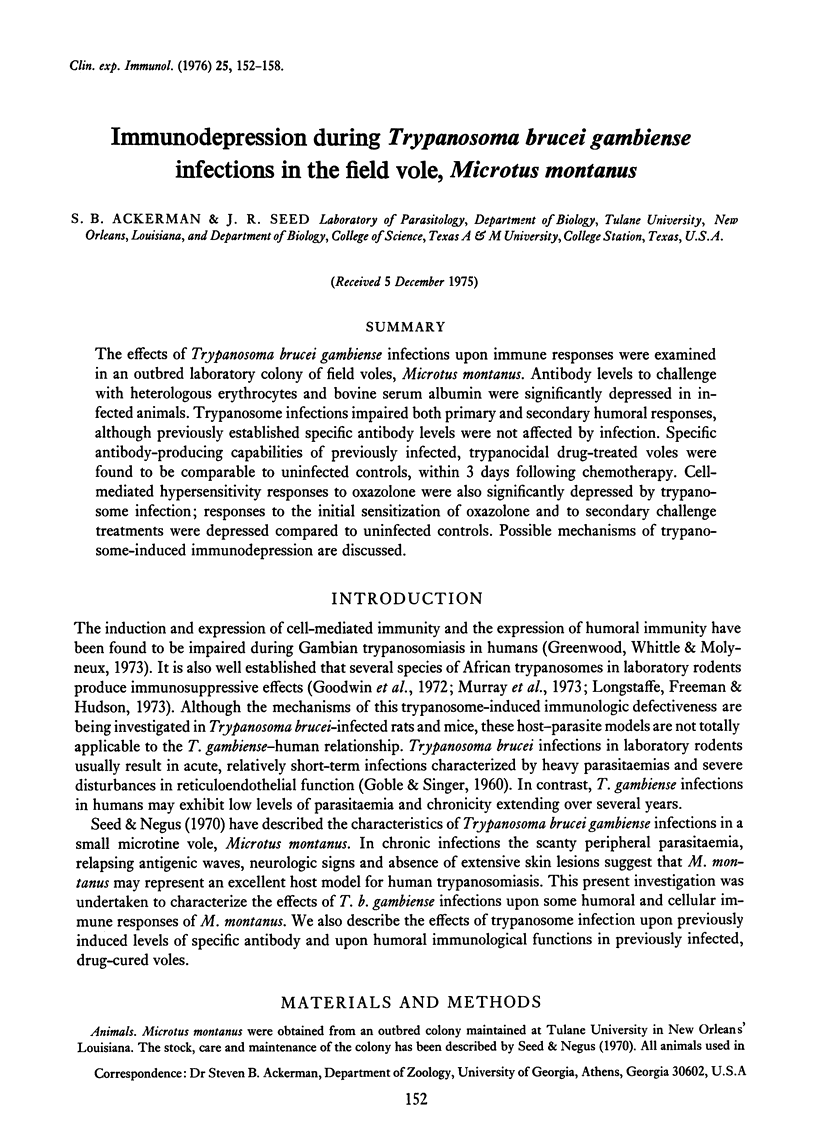
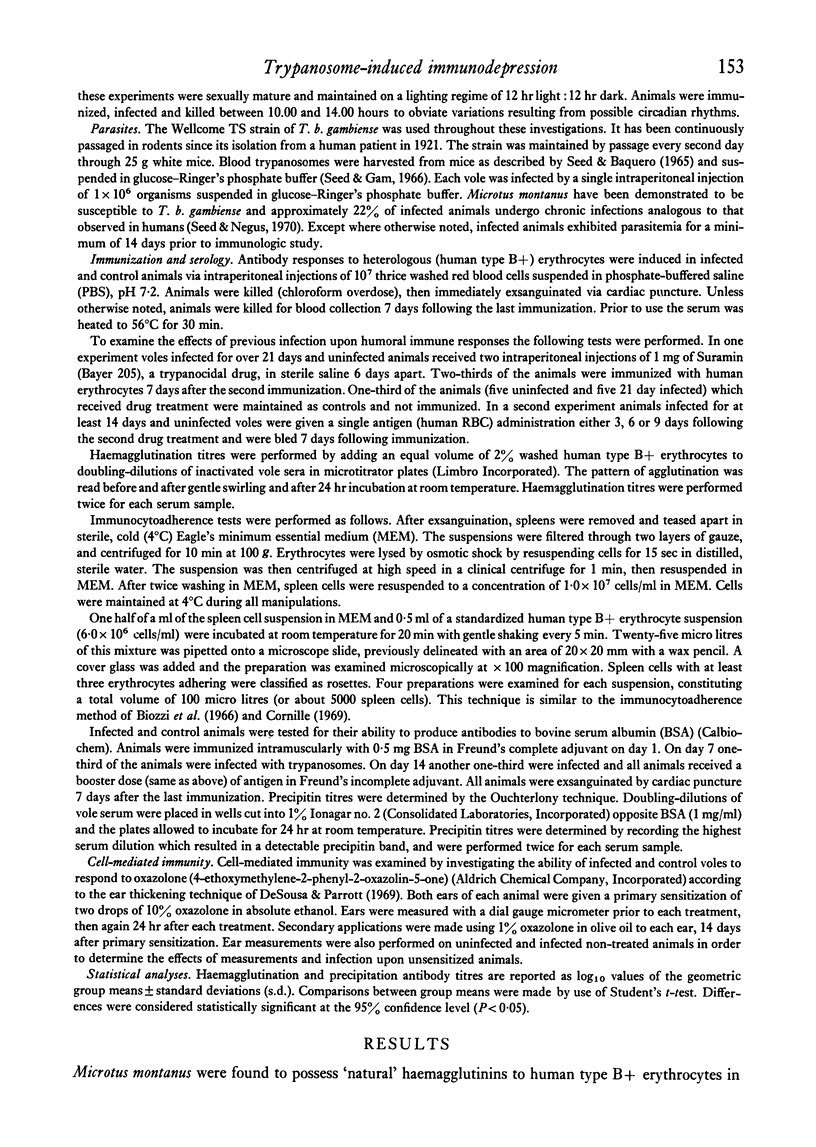
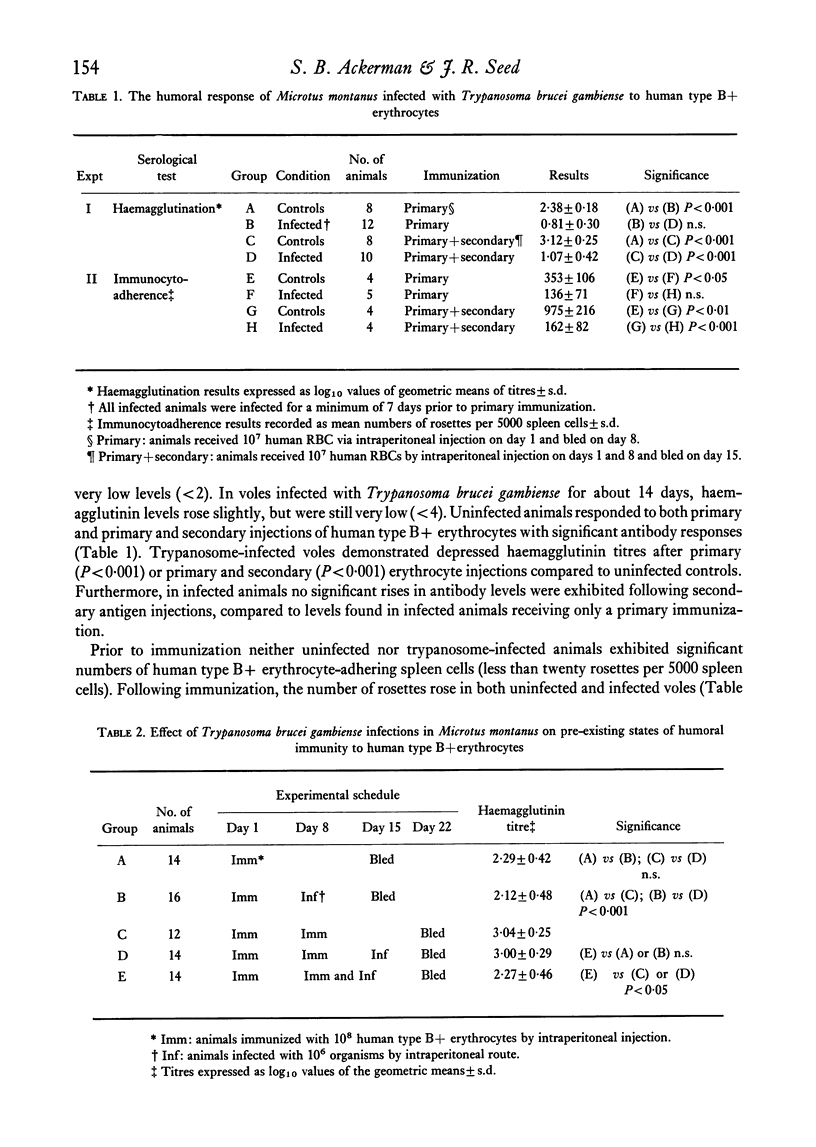

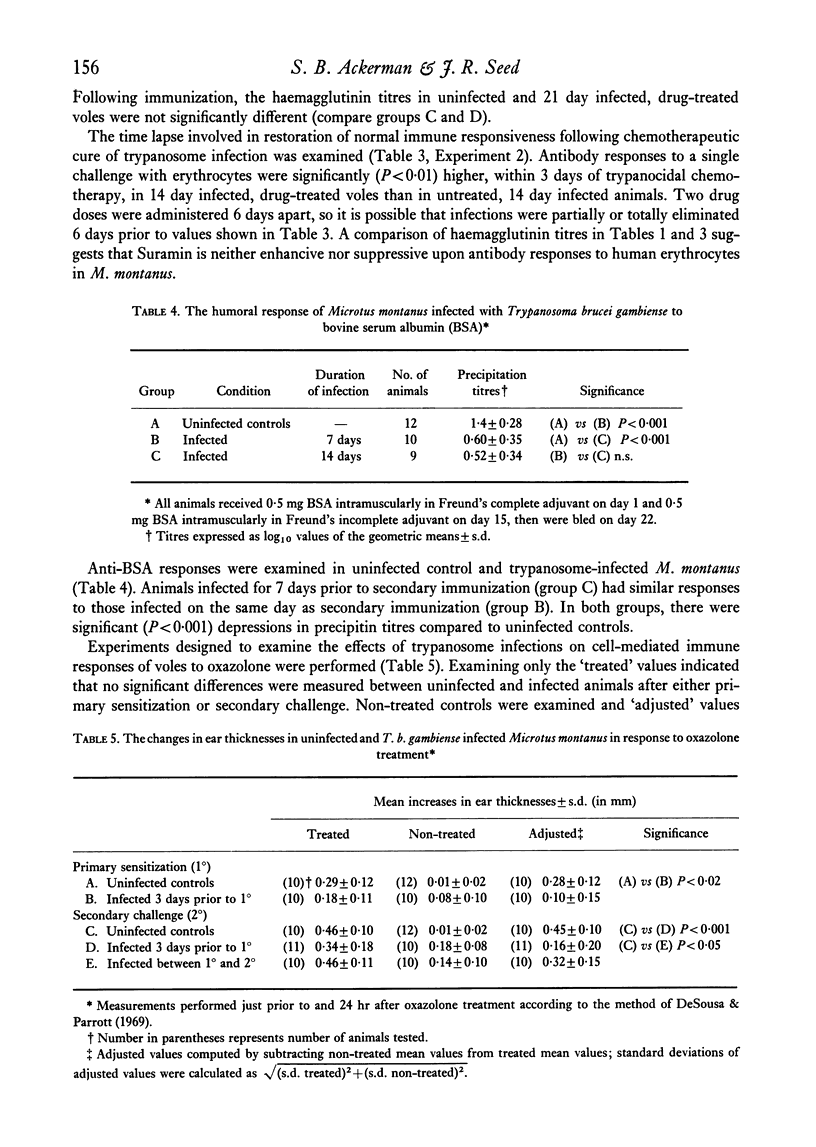
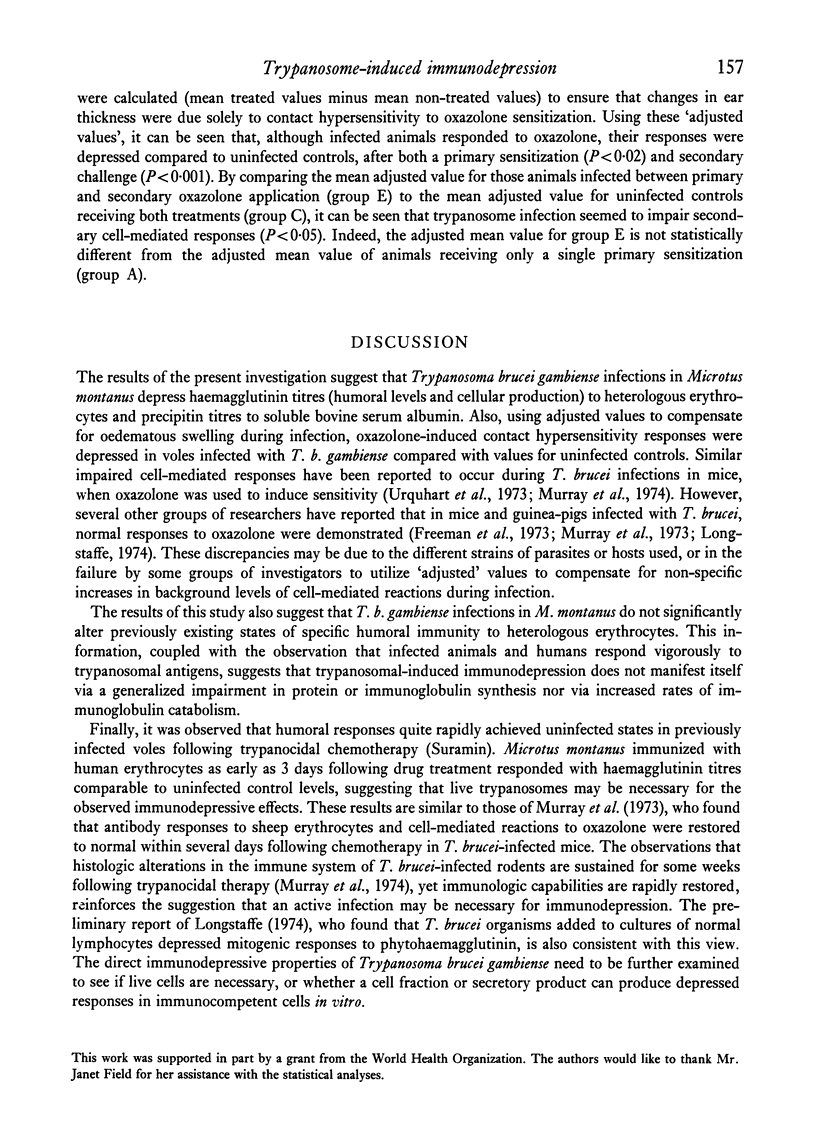
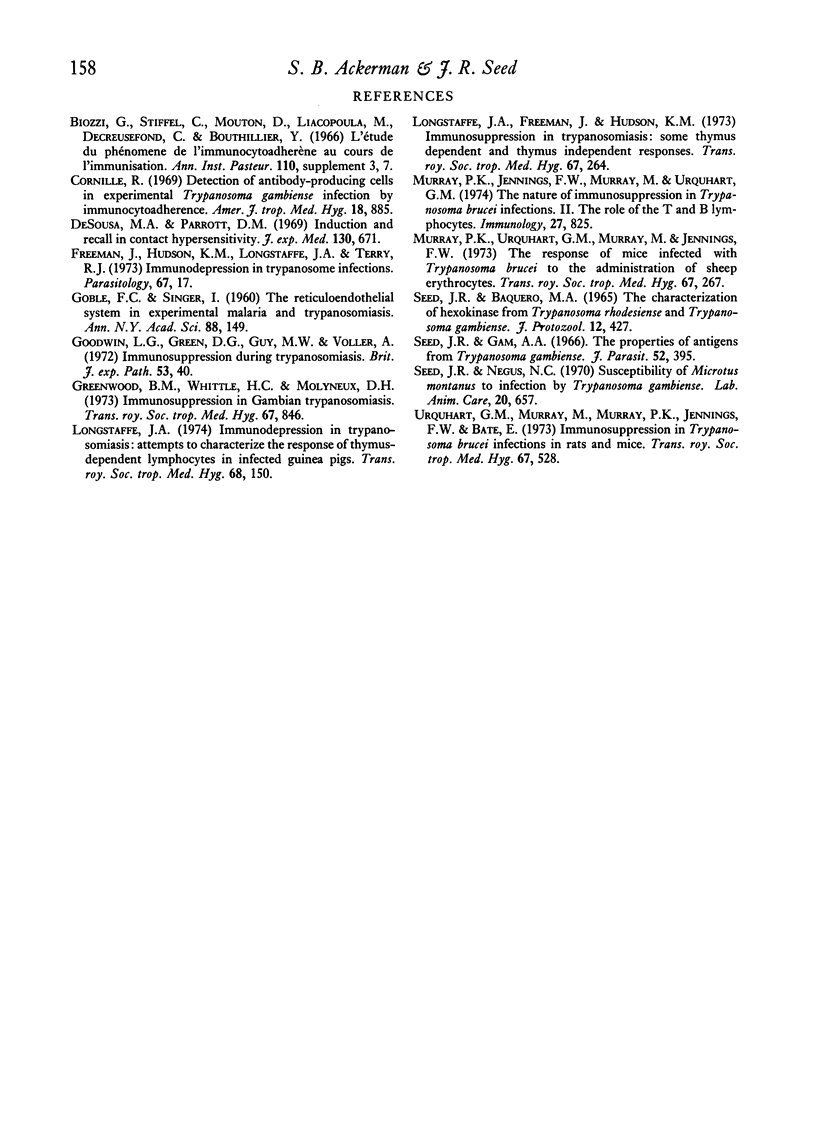
Selected References
These references are in PubMed. This may not be the complete list of references from this article.
- Cornille R. L. Detection of antibody-producing cells in experimental Trypanosoma gambiense infection by immunocytoadherence. Am J Trop Med Hyg. 1969 Nov;18(6):885–891. doi: 10.4269/ajtmh.1969.18.885. [DOI] [PubMed] [Google Scholar]
- Goodwin L. G., Green D. G., Guy M. W., Voller A. Immunosuppression during trypanosomiasis. Br J Exp Pathol. 1972 Feb;53(1):40–43. [PMC free article] [PubMed] [Google Scholar]
- Greenwood B. M., Whittle H. C., Molyneux D. H. Immunosuppression in Gambian trypanosomiasis. Trans R Soc Trop Med Hyg. 1973;67(6):846–850. doi: 10.1016/0035-9203(73)90013-8. [DOI] [PubMed] [Google Scholar]
- Longstaffe J. A., Freeman J., Hudson K. M. Immunosuppression in trypanosomiasis: some thymus dependent and thymus independent responses. Trans R Soc Trop Med Hyg. 1973;67(2):264–265. doi: 10.1016/0035-9203(73)90169-7. [DOI] [PubMed] [Google Scholar]
- Murray P. K., Jennings F. W., Murray M., Urquhart G. M. The nature of immunosuppression in Trypanosoma brucei infections in mice. II. The role of the T and B lymphocytes. Immunology. 1974 Nov;27(5):825–840. [PMC free article] [PubMed] [Google Scholar]
- Murray P. K., Urquhart G. M., Murray M., Jennings F. W. The response of mice infected with T. brucei to the administration of sheep erythrocytes. Trans R Soc Trop Med Hyg. 1973;67(2):267–267. doi: 10.1016/0035-9203(73)90173-9. [DOI] [PubMed] [Google Scholar]
- Oxbrow A. I. Strain specific immunity to Plasmodium berghei: a new genetic marker. Parasitology. 1973 Aug;67(1):17–27. doi: 10.1017/s0031182000046254. [DOI] [PubMed] [Google Scholar]
- Seed J. R., Baquero M. A. The characterization of hexokinase from Trypanosoma rhodesiense and Trypanosoma gambiense. J Protozool. 1965 Aug;12(3):427–432. doi: 10.1111/j.1550-7408.1965.tb03237.x. [DOI] [PubMed] [Google Scholar]
- Seed J. R., Negus N. C. Susceptibility of Microtus montanus to infection by Trypanosoma gambiense. Lab Anim Care. 1970 Aug;20(4 Pt 1):657–661. [PubMed] [Google Scholar]
- Urquhart G. M., Murray M., Murray P. K., Jennings F. W., Bate E. Immunosuppression in Trypanosoma brucei infections in rats and mice. Trans R Soc Trop Med Hyg. 1973;67(4):528–535. doi: 10.1016/0035-9203(73)90083-7. [DOI] [PubMed] [Google Scholar]
- de Sousa M. A., Parrott D. M. Induction and recall in contact sensivitity. Changes in skin and draining lymph nodes of intact and thymectomized mice. J Exp Med. 1969 Oct 1;130(4):671–690. doi: 10.1084/jem.130.4.671. [DOI] [PMC free article] [PubMed] [Google Scholar]


